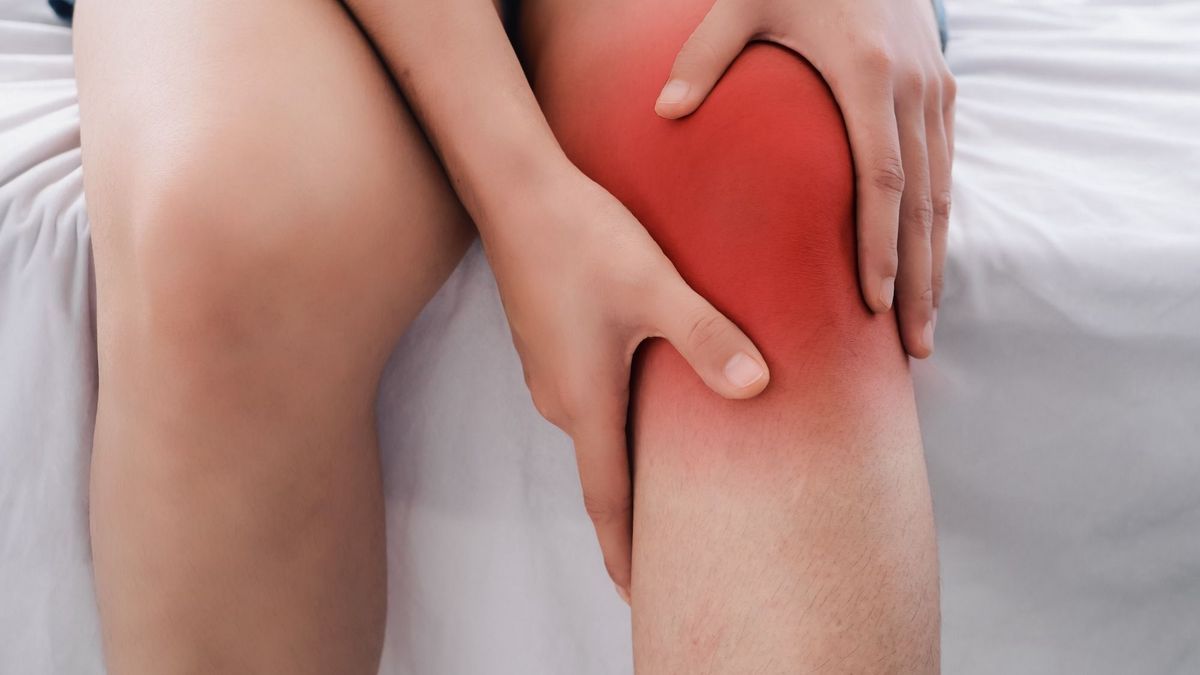
Sometimes confused with tendinitis, knee hygroma (or bursitis) is an inflammation of a bursa located at the level of the kneecap. What are the symptoms of hygroma? When should you worry? Are there effective treatments? Explanations from Dr Fabien Slomka, orthopedic surgeon in Paris.
Less known than elbow hygroma, knee hygroma is characterized by swelling and inflammation at the joint. What is the treatment for this “bursitis”? Are the ligaments involved? Does this increase the risk of osteoarthritis? In which cases is surgery useful? All the answers from our expert orthopedic surgeon.
Hygroma of the knee: what are we talking about?
A relatively common knee pathology, knee hygroma (or bursitis of the patella) is caused by inflammation of a serous bursa located at the level of the patella, namely the pre-patellar bursa or pre-patellar bursa.
“Contrary to popular belief, this serous bursa does not contain synovial fluid but serous fluid”, underlines Dr Fabien Slomka, orthopedic surgeon in Paris. This type of inflammation can also affect the bursa located at the shoulder or elbow.
Different possible causes
Depending on the cause, knee hygroma can appear on just one knee, or both. This type of inflammation mainly affects construction professionals who use their knees daily, through prolonged pressure directly on the ground or on a hard surface. “It is typically the disease of tilers, electricians and plumbers who very often work with their knees on the ground or in a squatting position,” explains the orthopedic surgeon. Some athletes are also affected. This is particularly the case for fans of combat sports, climbing and other sporting practices which place stress on the knees through prolonged pressure or micro-trauma at the joint level.
Furthermore, certain metabolic diseases, such as rheumatoid arthritis, diabetes or other autoimmune diseases as well as certain microcrystalline diseases such as gout, are likely to promote the appearance of a hygroma.
While everyone can potentially be affected by hygroma of the knee, this condition mainly affects active men, due to their professional and/or sporting activity, who represent the main risk factors for this inflammation.
Symptoms of a knee hygroma
Redness, pain and swelling of the knee are the characteristic symptoms of inflammation corresponding to a hygroma of the knee. The health risk? A superinfection of the bursa during the passage of a bacteria or another infection, for example. “If a purulent discharge appears or if the person has a fever, you should really consult without delay. This is a very rare but serious medical emergency,” explains Dr Fabien Slomka.
Indeed, an infection in the knee can lead to septic arthritis, which is potentially fatal. This is therefore a surgical emergency. “The aim of the surgical procedure is to remove the bursa and thoroughly clean the hygroma. Antibiotic treatment will then be administered for several days, or even several weeks depending on the case. explains the orthopedic surgeon.
Management of knee hygroma
Apart from these rare emergency situations, a hygroma of the knee always requires consultation.
Unlike knee effusion, the presence of fluid is felt at the front of the kneecap and not at the back of the knee.
Beyond the clinical signs, the diagnosis is established from an ultrasound and an MRI of the knee. “If in doubt, a biological assessment can be requested to verify the absence of inflammatory syndrome. adds the doctor.
Resting the knee for a few days represents the first recommendation. “In certain cases, we can put in place an extension splint in order to avoid any contraction of the knee which could worsen the situation”, specifies Dr Fabien Slomka.
In the absence of infection, anti-inflammatory drugs, including local ones, are commonly prescribed. “Anti-inflammatory patches as well as modified alcohol compresses may also be effective. continues the doctor.
A puncture performed at the level of the bursa, to which a corticosteroid is added, is also one of the treatments offered. Finally, physiotherapy could also be considered for its draining functions. Provided, however, that the knee is free of any infection.
It happens that the hygroma sets in over time and becomes chronic. In this case, surgical intervention may be considered. “If the painful episodes follow one another and the inflammation becomes chronic, it will then be necessary to remove the bursa in order to prevent a recurrence.specifies Dr Fabien Slomka.
If knee bursitis is caused by the presence of an autoimmune disease, you should consult a rheumatologist to treat the chronic disease responsible for the hygroma.
Some preventive measures
In order to prevent the risk of hygroma, wearing special pants incorporating shells serving as shock absorbers at knee level is strongly recommended for construction professionals.
If the hygroma follows sports practice, it is important to listen to your body and suspend the activity in order to rest your knees for the time necessary for recovery.
